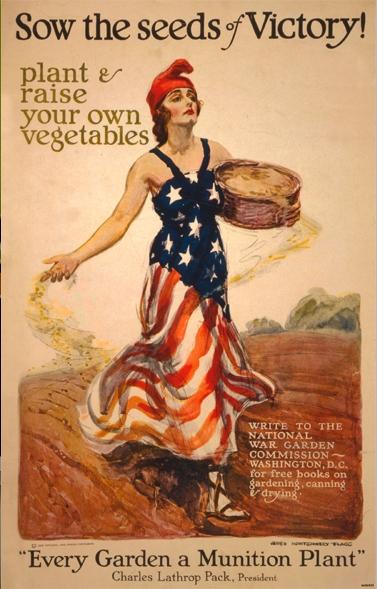
If you loathe the idea of eating GMO food, or if you cringe at the thought of eating produce doused in pesticides, organic gardening is definitely the way to go!
For someone who started out with a “black thumb,” my gardening skills have come a long way! However, gardening continues to be a learning process, and trial and error has been the best teacher.
I’ve done my fair share of reading (books, websites, gardening forums) and various resources have provided many helpful ideas and suggestions. I’d like to share some tips that have served me well thus far.
Getting started:
First and foremost, make sure your seeds (or starter plants) are certified organic and GMO-free. You can order organic seeds online or check out the inventory of a reputable garden center. If possible, work some organic matter into your soil (like compost or organic fertilizer) before planting your seeds.

And without further ado, five tips and tricks to get you on your way to a green thumb:
1) Soak your seeds before planting! This will help them germinate more quickly.
Soaking any of your seeds can be helpful, but especially soak larger seeds, like beans or pumpkin seeds. A good rule of thumb is the smaller the seeds, the shorter the soak should be.
So for small chili seeds (or tiny carrot seeds) only 15-20 minutes of soaking in necessary. If you soak small seeds too long, they will get spoiled. However larger seeds with thicker, harder casings do well soaking for a longer period of time—a few hours, but not more than 24 hours maximum.
2) Consider the placement of your seeds/plants in your garden.
a) Full sun or partial sun exposure?
Chilies require lots of sun exposure to thrive. Meanwhile, cucumbers need lots of light, but can also overheat, so a bit of afternoon shade can be a good thing for cukes. Do a Google search or read your seed packets to determine how much sunlight your plants will require, and try to set up your plot accordingly.

b) Companion planting—Plants helping other plants thrive; it’s a thing!
Planting Pole Beans this season? Those guys need some room to climb! Instead of staking or using a man-made trellis, plant pole beans next to corn! Wait until your corn sprouts have grown to be about six inches tall, then plant your (pre-soaked) bean seeds. As the beans sprouts grow, they can use the corn as a natural trellis to climb up. Bonus: the roots of the growing bean vines release nitrogen into the soil, which the corn needs!
Ever heard of that book Carrots Love Tomatoes ? Carrots can be a bit sensitive to heat, so put them next to growing tomato plants and the foliage will provide shade for the carrots! Additionally, tomatoes are said to secrete a natural insect deterrent, which guards against harmful carrot pests.
And hey, while you’re at it, if you have room, toss some chive seeds into the mix as well. Chives are alliums (onion family!) which give off a scent that repels the carrot fly pest. Chives are also said to improve the overall flavor of tomatoes when planted nearby, so planting them with carrots and tomatoes reaps many benefits. The companion planting possibilities are endless, so look for more info on the internet, or check out the aforementioned book.
3) Speaking of carrots, this one in very important: Do not plant carrots anywhere near your dogs!
They will eat them. And it will happen right before the carrots are ready to harvest! Frustrating! I had several carrots growing in a big pot in my backyard, and my dogs didn’t pay them any attention for weeks. Then, a few days before I was planning to start harvesting, I came home to find the pot knocked over, dirt spilling out, and hardly any trace left of the carrots! They even ate the green tops! So don’t grow any carrots where your pups can get to them, ’cause once they catch a whiff of that fresh carrot scent, it’s game-over. (And just the other day, I saw someone else post about this very same thing happening to them.) Don’t trust your dogs around your carrot plants!
4) So you’ve got stuff growing, now what? Time to mulch it up!
What the heck is mulch, you ask? Mulch is a layer of material applied to the surface of an area of soil. It’s used to reduce weed growth, and most importantly to preserve moisture. There’s lots of organic matter than can be used as mulch. Straw or hay is sometimes recommended, but I say use what you have readily available!
Look around your house or your neighborhood to find something you can use as mulch. I like to use rosemary! This is because I have a huge, overgrown rosemary bush in my backyard. (I seriously, have rosemary coming out the wah-zoo!) So I try to put the excess to good use. I clip several branches with kitchen shears, give them a rinse, and then spread the branches around on the soil underneath my growing plants.
Bonus: Rosemary has a strong scent that repels many garden pests, including the carrot fly!

Even when the rosemary branches dry out, the dry twigs and needles remain shading the soil, keeping it cool and preventing moisture from evaporating.
Get creative! I also have two giant magnolia trees in my front yard, which shed hundreds of leaves onto my front lawn. What trees do you have nearby? Collect the leaves and use them for mulch! When you use organic matter like leaves, it eventually breaks down into the soil beneath it, replenishing the soil with nutrients!
5) Have a bit of a clue about bugs.
Just last night I saw a grasshopper hanging out on one of my sunflowers. For some reason, I thought a grasshopper in the garden was a good thing, so I let it be. When I did a quick search online later, I learned this was not the case!
What I read on several different sites is that grasshoppers are voracious eaters. (Voracious with a capital V!) They will eat anything and everything! Fruit, berries, plants… basically whatever you are trying to grow. (Ah, now this explains the pole bean seedling that disappeared without a trace! I was seriously bewildered about that!) Luckily when I went out to look this morning, the ‘lil guy was still chilling like he was king of the sunflower. I captured him in an old pickle jar, walked down the street, wished him luck, and released him onto a grassy area at a nearby school.
I think I initially made the wrong assumption about the grasshopper, because I had heard that a praying mantis is good to have in the garden.
As it turns out, not all hopping, locust-y type insects have the same qualities. Praying mantis in the garden is (mostly) good, because they eat up all the troublesome garden pests you have lurking about. The only bad thing is, the mantis will eat beneficial insects as well.
Beneficial insects include bees, butterflies and ladybugs. Bees and butterflies help pollinate your plants, and ladybugs eat soft-bodied garden pests like aphids. So keep an eye on what is fluttering around your garden, and if you want to attract more beneficial insects, plant some borage or sunflowers.
Hope you find these tips helpful! Try ’em out and see what works for you. You’ll learn a little more with each growing season, and before ya know it, your thumb may turn green!
Love elephant and want to go steady?
Sign up for our (curated) daily and weekly newsletters!
Editor: Travis May
Photos: Author’s own
 Share on bsky
Share on bsky







Read 7 comments and reply